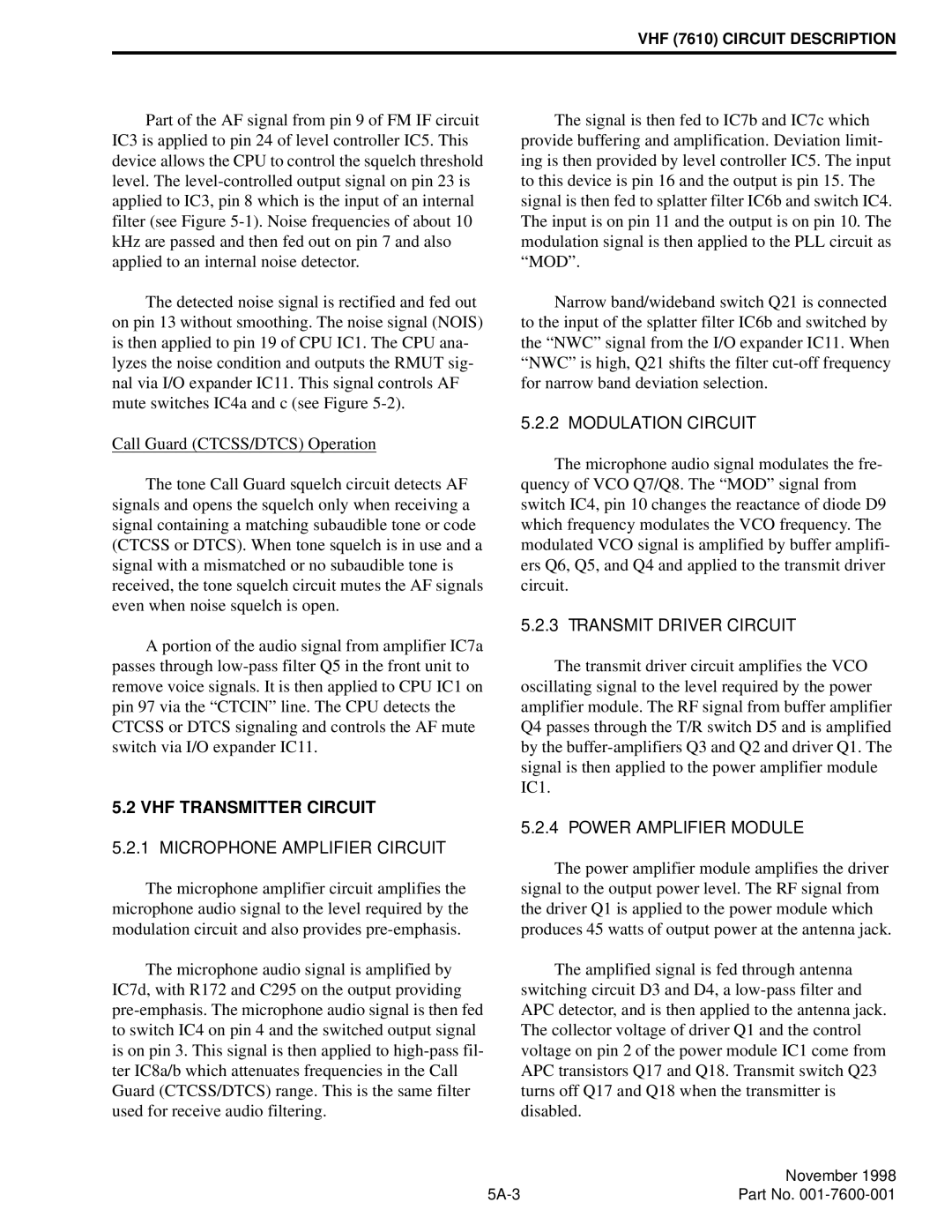VHF (7610) CIRCUIT DESCRIPTION
Part of the AF signal from pin 9 of FM IF circuit IC3 is applied to pin 24 of level controller IC5. This device allows the CPU to control the squelch threshold level. The
The detected noise signal is rectified and fed out on pin 13 without smoothing. The noise signal (NOIS) is then applied to pin 19 of CPU IC1. The CPU ana- lyzes the noise condition and outputs the RMUT sig- nal via I/O expander IC11. This signal controls AF mute switches IC4a and c (see Figure
Call Guard (CTCSS/DTCS) Operation
The tone Call Guard squelch circuit detects AF signals and opens the squelch only when receiving a signal containing a matching subaudible tone or code (CTCSS or DTCS). When tone squelch is in use and a signal with a mismatched or no subaudible tone is received, the tone squelch circuit mutes the AF signals even when noise squelch is open.
A portion of the audio signal from amplifier IC7a passes through
5.2 VHF TRANSMITTER CIRCUIT
5.2.1 MICROPHONE AMPLIFIER CIRCUIT
The microphone amplifier circuit amplifies the microphone audio signal to the level required by the modulation circuit and also provides
The microphone audio signal is amplified by IC7d, with R172 and C295 on the output providing
The signal is then fed to IC7b and IC7c which provide buffering and amplification. Deviation limit- ing is then provided by level controller IC5. The input to this device is pin 16 and the output is pin 15. The signal is then fed to splatter filter IC6b and switch IC4. The input is on pin 11 and the output is on pin 10. The modulation signal is then applied to the PLL circuit as “MOD”.
Narrow band/wideband switch Q21 is connected to the input of the splatter filter IC6b and switched by the “NWC” signal from the I/O expander IC11. When “NWC” is high, Q21 shifts the filter
5.2.2 MODULATION CIRCUIT
The microphone audio signal modulates the fre- quency of VCO Q7/Q8. The “MOD” signal from switch IC4, pin 10 changes the reactance of diode D9 which frequency modulates the VCO frequency. The modulated VCO signal is amplified by buffer amplifi- ers Q6, Q5, and Q4 and applied to the transmit driver circuit.
5.2.3 TRANSMIT DRIVER CIRCUIT
The transmit driver circuit amplifies the VCO oscillating signal to the level required by the power amplifier module. The RF signal from buffer amplifier Q4 passes through the T/R switch D5 and is amplified by the
5.2.4 POWER AMPLIFIER MODULE
The power amplifier module amplifies the driver signal to the output power level. The RF signal from the driver Q1 is applied to the power module which produces 45 watts of output power at the antenna jack.
The amplified signal is fed through antenna switching circuit D3 and D4, a
| November 1998 |
Part No. |
